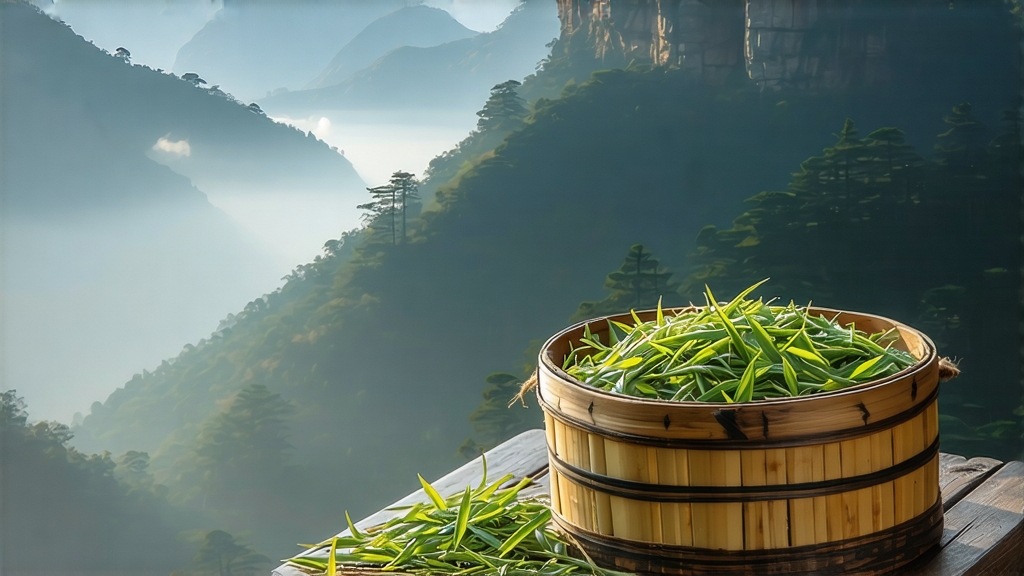
Meng Ding Huang Ya, literally “Yellow Bud from Meng Ding,” is the quiet aristocrat of Chinese tea. While green teas grab headlines and pu-erhs fill auction rooms, this yellow tea from the mist-crowned peaks of Ya’an, Sichuan, has survived dynasties, wars and market fads with its fragrance intact. To understand it is to taste a slice of Tang-dynasty court life, when tea bricks were currency and the first tender buds of spring were carried by fast horses to Chang’an for the emperor’s birthday.
History: from tribute to obscurity
The earliest record appears in the Chronicles of Meng Shan, compiled 812 CE: “The monks pick on the third rain day after Qingming; one bud, one leaf, wrapped in silk, sent east.” By Song times the tea had earned the moniker “Immortal Buds,” and Ming Taizu’s 1391 edict banning compressed tea actually elevated Huang Ya’s status: loose yellow buds became one of only six teas allowed as imperial tribute. Caravans leaving Ya’an for Tibet carried bricks of darker border tea, but the light-yellow loose leaf travelled north in small bamboo cylinders lined with banana leaf, a luxury item exchanged for Mongolian horses. When Qing rulers shifted their taste to fragrant green Dragon Well, Meng Ding Huang Ya retreated into monasteries, quietly sustained by Buddhist and Taoist clerics who valued its gentle qi. Only in 1959 did the state re-launch it as a “National Gift Tea,” yet even today annual production hovers below three tonnes, most of which never leaves Sichuan.
Terroir: where cloud and stone meet
Meng Ding range, western rim of the Sichuan basin, rises abruptly from 500 m to 1 456 m. The classic garden, Ganlu Temple, sits at 1 100 m, wrapped year-round in cloud veil that shortens sunlight to four hours a day. The soil is a crumbly yellow shale rich in selenium; drainage is so sharp that roots plunge two metres in search of water, concentrating amino acids. Day-night temperature swings of 10 °C slow growth, so the spring bud window is only seven days, usually 20–27 March. Local mist also filters UV, yielding a higher ratio of theaflavins to catechins—chemistry that later allows the unique “smothering” enzymatic oxidation that turns the bud from green to primrose yellow.
Three styles under one name
Farmers recognise three micro-types, all from the same Xiao-ye (small-leaf) cultivar but differing in picking standard and finishing:
- Bud-only Huang Ya: the historical tribute grade, 100 000 buds per 500 g. After smothering the bud tip retracts slightly, resembling a golden fish hook.
- One-bud-one-leaf: called “Kai Hua” because the leaf opens like a miniature orchid; balanced liquor, more affordable.
- One-bud-two-leaves: “Zhen Gan,” literally “needle and stem,” invented in the 1970s to meet export demand; stronger, with a faint cocoa note.
Craft: the art of controlled suffocation
Yellow tea’s hallmark is “men huang” (smothering), a step that sits between green tea killing-green and white tea withering. The Meng Ding version is a 72-hour choreography:
Day 1, morning: 08:00–11:30 picking. Shears are forbidden; nails are trimmed to avoid bruising.
Day 1, noon: shaqing (kill-green) in a 140 °C bamboo-roasted wok for 3.5 minutes; only 150 g per wok. The master’s wrist motion—push, lift, shake—must leave the bud 30 % moisture, enough for enzymatic life.
Day 1, evening: first wrap. The semi-dry buds are piled in bundles of 80 g, wrapped in steamed Meng bamboo film, then buried in a 28 °C straw-lined wooden box for 6 hours. Polyphenol oxidase wakes up, chlorophyll degrades, colour shifts from jade to lemon.
Day 2: unwrap, low-temperature (65 °C) re-firing for 10 minutes to halt edge oxidation, then re-wrap while still 45 % moist. This cycle repeats three times.
Day 3, dawn: final firing at 50 °C for 40 minutes until moisture drops to 7 %. The bud is now matte yellow,